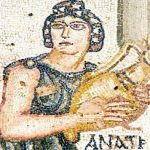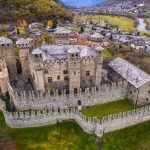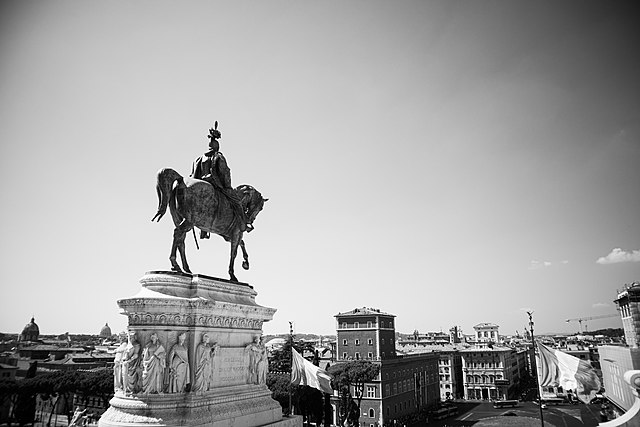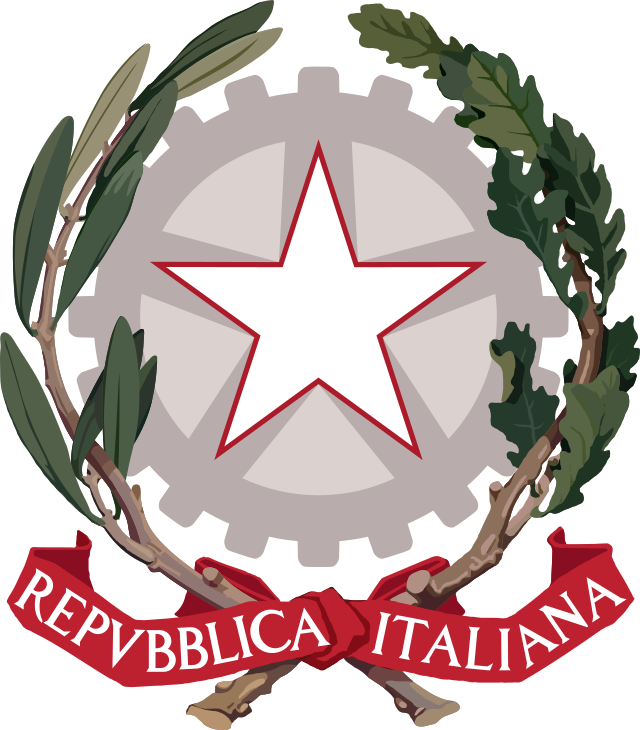(English follows)
Alla fine della Seconda guerra mondiale almeno 20mila italiani delle ex province italiane della Venezia Giulia, dell’Istria, di Fiume e della Dalmazia sono torturati, assassinati e gettati nelle foibe (le fenditure carsiche usate come discariche) dalle milizie della Jugoslavia di Tito; almeno 250mila gli esuli italiani costretti a lasciare le loro case.
Il 10 febbraio 2004 veniva approvata la legge 92/2004 che istituiva il Giorno del Ricordo per le vittime delle foibe. Da allora ogni anno viene celebrata questa data al fine di non dimenticare tutte le vittime delle foibe, dell’esodo degli istriani, fiumani e dalmati dalle loro terre.
Ancora oggi la memoria di quelle vittime è un tema che divide. Per quasi sessant’anni questi drammatici eventi della storia italiana sono stati dimenticati.
Per il 20° anniversario del Giorno del Ricordo ricostruiamo questa pagina della storia.
La fine della guerra. Nel 1943, dopo tre anni di guerra, il regime fascista di Mussolini decreta il proprio fallimento. Si scioglie il Partito fascista, si ha la resa e lo sfaldamento delle nostre Forze Armate. L’Italia è in ginocchio.

La vendetta di Tito. Le forze politiche comuniste guidate da Josip Broz, “Tito”, sconfiggono i fascisti croati e i “domobranzi”, ragazzi di leva sloveni, chiamati alle armi da Lubiana a partire dal 1940, quando la Slovenia viene incorporata nell’Italia divenendone una provincia autonoma.
Proprio dopo la firma dell’armistizio, l’8 settembre 1943 esplode la prima ondata di violenza: in Istria e in Dalmazia i partigiani jugoslavi di Tito si vendicano contro i fascisti che, nell’intervallo tra le due guerre, hanno amministrato questi territori con durezza, imponendo un’italianizzazione forzata e reprimendo e osteggiando le popolazioni slave locali.
Alla fine del 1943 i fascisti e tutti gli italiani non comunisti vengono considerati nemici del popolo con il crollo del regime. Vengono prima torturati e poi gettati nelle foibe dove muoiono circa un migliaio di persone.
L’italianizzazione della Dalmazia e della Venezia Giulia durante il fascismo segue il modello francese: una serie di provvedimenti di legge, come l’italianizzazione della toponomastica e dei nomi propri, e la chiusura delle scuole bilingue.
Inizia la battaglia di (ri)conquista della Slovenia e Croazia – annesse al Terzo Reich- da parte di Tito e i suoi uomini, fedelissimi di Mosca. L’obiettivo è di impadronirsi non solo della Dalmazia e della penisola d’Istria (dove c’erano borghi e città con comunità italiane sin dai tempi della Repubblica di Venezia), ma di tutto il Veneto, fino all’Isonzo.
Il freno dei nazisti. I partigiani jugoslavi sono frenati fino alla fine dell’aprile del 1945 dai tedeschi con stragi, rappresaglie, paesi incendiati e distrutti, ma con il crollo del Terzo Reich nulla ormai può più fermare gli uomini di Tito. Nella primavera del 1945 l’esercito jugoslavo occupa l’Istria e punta verso Trieste.
La liberazione degli alleati. Le truppe alleate avanzano dal sud della penisola. E’ una vera e propria gara di velocità. La prima formazione alleata libera Venezia e poi Trieste.
Gli jugoslavi si impadroniscono di Fiume e di tutta l’Istria interna, iniziando le feroci esecuzioni contro gli italiani. Ma non riescono ad assicurarsi la città, il porto e le fabbriche di Trieste, la preda più ambita. La rabbia degli uomini di Tito si scatena allora contro persone inermi.
I numeri delle vittime. l numero degli infoibati e dei massacrati da Tito è ben superiore a quello temuto dal premier italiano De Gasperi. Le uccisioni di italiani – nel periodo tra il 1943 e il 1947 – sono almeno 20mila; gli esuli italiani costretti a lasciare le loro case almeno 250mila.
Come si moriva nelle foibe. Carabinieri, poliziotti e guardie di finanza, i pochi militari fascisti della RSI e i collaborazionisti sono i primi a finire in foiba nel 1945 non riuscendo a scappare per tempo. Si prendono le mogli, i figli o i genitori in mancanza di questi.
Il metodo delle uccisioni è spaventosamente crudele. I condannati vengono legati l’un l’altro con un lungo filo di ferro stretto ai polsi, e schierati sugli argini delle foibe. Quindi si apre il fuoco non su tutto il gruppo, ma soltanto sui primi tre o quattro della catena. Precipitando nell’abisso, morti o gravemente feriti, trascinano con sé gli altri, condannati a sopravvivere per giorni sui fondali delle voragini, sui cadaveri dei loro compagni.
Tremila persone soltanto nella zona triestina, vengono gettate nella foiba di Basovizza e nelle altre foibe del Carso.
Il dramma di Fiume e il destino dell’istria. Avviene una fuga di massa. Entro la fine del 1946, 20.000 persone lasciano la città, abbandonando case, averi, terreni. La città di Fiume si spopola e interi nuclei familiari raggiungono l’Italia ben prima della conclusione della Conferenza della pace di Parigi (1947), alla quale sono legate le sorti dell’Istria e della Venezia Giulia, come dichiara Churchill.
La conferenza di pace di Parigi. Alla fine del 1946 la questione italo-jugoslava diventa per molti un peso che intralcia la soluzione di altre questioni considerate più importanti. Gli Alleati vogliono trovare una soluzione per Vienna e Berlino; l’Unione Sovietica deve sistemare la divisione della Germania. L’Italia è alle prese con la transizione tra monarchia e repubblica.
Bisogna determinare il confine tra Italia e Jugoslavia. Il dramma delle terre italiane dell’Est si conclude con la firma del trattato di pace di Parigi il 10 febbraio 1947. Alla fine viene deciso di seguire l’opzione suggerita dalla Francia: l’Italia consegna alla Jugoslavia numerose città e borghi a maggioranza italiana rinunciando per sempre a Zara, alla Dalmazia, alle isole del Quarnaro, a Fiume, all’Istria e a parte della provincia di Gorizia.
L’esodo. Il trattato di pace di Parigi regala alla Jugoslavia il diritto di confiscare tutti i beni dei cittadini italiani, con l’accordo che verranno poi indennizzati dal governo di Roma.
Questo causa due ingiustizie: Prima di tutto l’esodo forzato delle popolazioni italiane istriane e giuliane che fuggono a decine di migliaia, abbandonando tutto. E, in seguito, il mancato risarcimento.
La maggioranza degli esuli emigra in varie parti del mondo cercando una nuova patria: in Sud America, in Australia, in Canada e negli Stati Uniti.
Interesse politico in atti d’ufficio. Tanti riescono a sistemarsi faticosamente in Italia, nonostante gli ostacoli creati dai ministri del partito comunista che, favorevoli alla Jugoslavia, minimizzano la portata della diaspora.
Emilio Sereni, che ricopre la carica di ministro per l’Assistenza post-bellica, è tra questi. Rifiuta di ammettere nuovi esuli nei campi profughi di Trieste con la scusa che non c’era più posto e parla di «fratellanza italo-slovena e italo-croata». Sostiene la necessità di scoraggiare le partenze e di costringere gli istriani a rimanere nelle loro terre, affermando che le notizie sulle foibe erano “propaganda reazionaria”.
Il giorno del ricordo. E’ difficile capire come una simile tragedia sia stata taciuta per quasi sessant’anni fino a quando il Parlamento approva nel 2004 la “legge Menia” (dal nome del deputato triestino Roberto Menia, che l’ha proposta) sulla istituzione del “Giorno del Ricordo”.
Per decenni la tacita complicità tra le forze politiche centriste e cattoliche da una parte, e quelle di estrema sinistra dall’altra e’ crollata soltanto dopo il 1989 con il crollo del muro di Berlino e l’autoestinzione del comunismo sovietico.
Incominciava ad aprirsi qualche crepa:
– Il 3 novembre 1991 l’allora presidente della Repubblica Francesco Cossiga si reca in pellegrinaggio alla foiba di Basovizza e chiede perdono in ginocchio per un silenzio durato cinquant’anni.
– Poi la TV pubblica arriva con la fiction Il cuore nel pozzo.
– l’11 febbraio 1993, un altro presidente della Repubblica, Oscar Luigi Scalfaro, si reca in omaggio davanti al sacrario di Basovizza.
Finalmente abbiamo tutti potuto conoscere la tragedia delle terre orientali italiane e le sofferenze subìte dagli italiani della Venezia Giulia, dell’Istria, di Fiume e della Dalmazia.
English version
At the end of the Second World War at least 20 thousand Italians from the former Italian provinces of Venezia Giulia, Istria, Fiume and Dalmatia were tortured, murdered and thrown into foibe (karst fissures used as landfills) by the militias of Tito’s Yugoslavia; at least 250 thousand Italian exiles forced to leave their homes.
On 10 February 2004, law 92/2004 was approved which established the Day of Remembrance for the victims of the foibe. Since then this date has been celebrated every year in order not to forget all the victims of the Foibe, of the exodus of Istrians, Fiumans and Dalmatians from their lands.
Even today the memory of those victims is a divisive issue. For almost sixty years these dramatic events in Italian history were forgotten.
For the 20th anniversary of Remembrance Day we’ll reconstruct this page of history.
The end of the war. In 1943, after three years of war, Mussolini’s fascist regime decreed its failure. The fascist party dissolves, there is the surrender and disintegration of our Armed Forces. Italy is on its knees.
The collapse of the Italian army fatally involves the two capitals, Zagreb (Croatia) and Ljubljana (Slovenia), the two Balkan regions bordering Italy.

Tito’s revenge. The communist political forces led by Josip Broz, “Tito”, defeated the Croatian fascists and the “domobranzi”, Slovenian conscripts, called to arms by Ljubljana starting from 1940, when Slovenia was incorporated into Italy, becoming one autonomous province.
Precisely after the signing of the armistice, the first wave of violence exploded on 8 September 1943: in Istria and Dalmatia, Tito’s Yugoslav partisans took revenge against the fascists who, in the interval between the two wars, administered these territories with harshness, imposing forced Italianization and repressing and opposing the local Slavic populations.
At the end of 1943 the fascists and all non-communist Italians are considered enemies of the people with the collapse of the regime. They are first tortured and then thrown into the foibe sinkholes where around a thousand people die.
The Italianization of Dalmatia and Venezia Giulia during fascism followed the French model: a series of legal provisions, such as the Italianization of toponymy and proper names, and the closure of bilingual schools.
The battle of (re)conquest of Slovenia and Croatia – annexed to the Third Reich – by Tito and his men, loyal to Moscow, begins. The objective is to take over not only Dalmatia and the Istrian peninsula (where there were villages and cities with Italian communities since the times of the Republic of Venice), but the entire Veneto, up to the Isonzo.
The brake of the Nazis. The Yugoslav partisans are held back until the end of April 1945 by the Germans with massacres, reprisals, towns set on fire and destroyed, but with the collapse of the Third Reich nothing could stop Tito’s men anymore. In the spring of 1945 the Yugoslav army occupies Istria and heads towards Trieste.
The liberation of the allies. Allied troops advance from the south of the peninsula. It’s a real speed race. The first Allied formation liberates Venice and then Trieste.
The Yugoslavs take over Fiume and all of internal Istria, starting ferocious executions against the Italians. But they fail to secure the city, the port and the factories of Trieste, the most coveted prey. The anger of Tito’s men is then unleashed against defenseless people.
The numbers of victims. The number of those defeated and massacred by Tito is much higher than that feared by the Italian Prime Minister De Gasperi. The killings of Italians – in the period between 1943 and 1947 – were at least 20 thousand; at least 250 thousand Italian exiles forced to leave their homes.
How people died in the foibe. Carabinieri, policemen and financial police, the few fascist soldiers of the RSI and the collaborators were the first to end up in the foiba in 1945, failing to escape in time. They take wives, children or parents in the absence of these.
The killing method is appallingly cruel. The condemned are tied to each other with a long wire tightened around their wrists, and lined up on the banks of the foibe. Then fire is opened not on the entire group, but only on the first three or four of the chain. Falling into the abyss, dead or seriously injured, they drag the others with them, condemned to survive for days on the bottom of the chasms, on the corpses of their companions.
Three thousand people in the Trieste area alone are thrown into the Basovizza foiba and the other sinkholes in the Carso.
The drama of Fiume and the fate of Istria. A mass escape occurs. By the end of 1946, 20,000 people leave the city, abandoning homes, belongings and land. The city of Fiume becomes depopulated and entire families reach Italy well before the conclusion of the Paris Peace Conference (1947), to which the fate of Istria and Venezia Giulia were linked, as Churchill declares.
The Paris Peace Conference. At the end of 1946, the Italian-Yugoslav question becomes a burden for many hindering the solution of other issues considered more important. The Allies want to find a solution for Vienna and Berlin; the Soviet Union must fix the division of Germany. Italy is grappling with the transition between monarchy and republic.
The border between Italy and Yugoslavia must be determined. The drama of the Italian lands in the East ends with the signing of the Paris Peace Treaty on 10 February 1947. In the end it;sdecided to follow the option suggested by France: Italy hands over numerous cities and villages with an Italian majority to Yugoslavia forever giving up Zadar, Dalmatia, the Kvarner islands, Fiume, Istria and part of the province of Gorizia.
The exodus. The Paris Peace Treaty gives Yugoslavia the right to confiscate all assets of Italian citizens, with the agreement that they will then be compensated by the government in Rome.
This causes two injustices: First of all the forced exodus of the Italian Istrian and Julian populations who flee by the tens of thousands, abandoning everything. And, subsequently, the lack of compensation.
The majority of exiles emigrate to various parts of the world looking for a new homeland: in South America, Australia, Canada and the United States.
Political interest in official acts. Many manage to settle in Italy with difficulty, despite the obstacles created by the ministers of the communist party who, in favor of Yugoslavia, minimize the extent of the diaspora.
Emilio Sereni, who holds the position of minister for post-war assistance, is among these. He refuses to admit new exiles into the refugee camps of Trieste with the excuse that there is no more room and speaks of “Italian-Slovenian and Italian-Croatian brotherhood”. He supports the need to discourage departures and force Istrians to remain in their lands, stating that the news about the foibe were “reactionary propaganda”.
The day of remembrance. It is difficult to understand how such a tragedy was kept quiet for almost sixty years until Parliament approved the “Menia law” in 2004 (named after the Trieste MP Roberto Menia, who proposed it) on the establishment of the “Day of Rememberance”.
For decades the tacit complicity between the centrist and Catholic political forces on the one hand, and those of the far left on the other collapsed only after 1989 with the collapse of the Berlin Wall and the self-extinction of Soviet communism.
Some cracks were starting to open:
- On 3 November 1991, the then President of the Republic Francesco Cossiga went on a pilgrimage to the Basovizza foiba and asked for forgiveness on his knees for a silence that had lasted fifty years.
- Then public TV arrives with the fiction The Heart in the Well.
- on 11 February 1993, another President of the Republic, Oscar Luigi Scalfaro, paid homage in front of the Basovizza shrine.
We were finally all able to learn about the tragedy of the eastern Italian lands and the suffering enduredby the Italians of Venezia Giulia, Istria, Fiume and Dalmatia.
Io se fossi in te leggerei anche questi
(If I were you, I’d also read these):
- I soldati dimenticati – The forgotten soldiers

- History of the Italy: The Etruscans | La Storia della Cultura Italiana: Gli Etruschi

- Per i politici italiani la lingua italiana è un optional

- La Posca dei legionari romani

- The language of wine between art and taste

- Settimana della Cucina Italiana nel Mondo

- Un viaggio virtuale in Abruzzo

- Scioglilingua basati sui numeri

- Un viaggio virtuale in Valle d’Aosta





